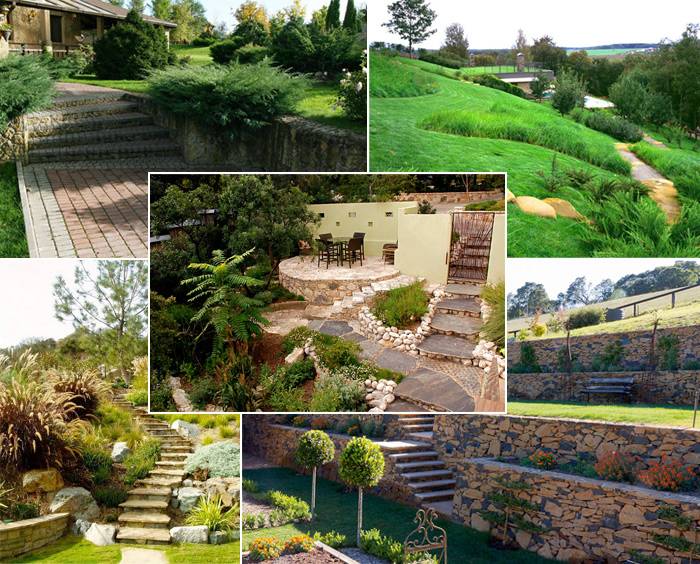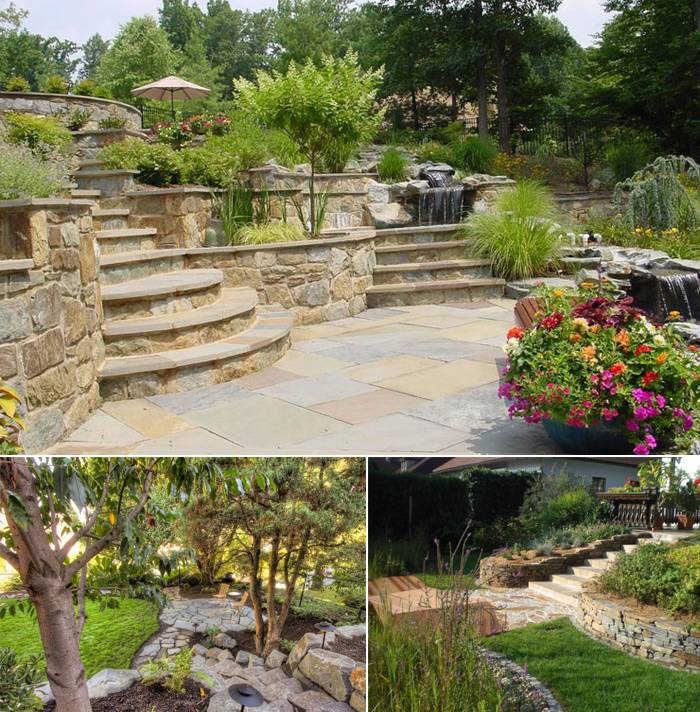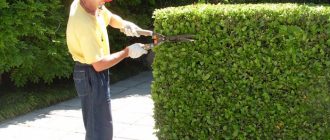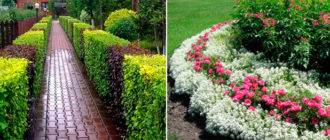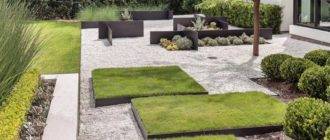With the right approach, the ravine on the site can be turned into a decorative and functional area. There are no identical slopes. Therefore, it is necessary to proceed from the characteristics of each specific site, taking into account its size and the specifics of the relief. If the area is at least 30 acres, and the size of the ravine is small, it will be easy to beat it. For example, in this place you can organize a reservoir, and turn the shore into a comfortable beach. If it is impractical to make a pond, a garden can be planted on the slopes.
On a small plot, for example with an area of 6 acres, and almost completely occupied by a ravine, the situation is much more complicated. Here you need to build a house and other necessary buildings, equip a vegetable garden, and you probably want to make a flower bed. In this case, it is necessary to strengthen the slopes, change the relief, select the optimal plants (many varieties cannot grow normally in ravines), provide protection from moisture, since in spring such areas are usually heavily flooded.
The angle of the slopes must be taken into account. The degree of their strengthening depends on this indicator. Based on the specific features, the following measures can be taken:
- full filling of the ravine with soil to level the relief;
- strengthening of slopes, since any ravine has a movable surface, the soil moves, crumbles;
- beautification (planting of plants, placement of decor), construction of a house and outbuildings. The relief practically does not change, but adapts to specific needs.
Leveling the ravine
The ravine can really be covered with soil. But, in practice, this is an extremely difficult way to implement. Not all ravines can be turned into flat terrain. You can't just bring a few earth machines. After a certain period of time, subsidence and erosion of the site will occur.
First of all, you need to conduct a geological survey. Experts will study the features of the territory, and will give recommendations regarding the transformation of the ravine. They will indicate the optimal places for the construction of a house and other buildings. Otherwise, after a certain time, subsidence of the soil can lead to the complete destruction of buildings. This period can take from several years to decades.
A ravine of small area and depth, in the place of which a massive foundation will not be built, where only the arrangement of the garden is planned, can be transformed in this way:
- Install gravel or crushed stone as drainage.
- Cover with earth. The first layer should be small - about 30 cm, after laying, a thorough compaction is performed. It is necessary to give a certain time for the natural shrinkage of the soil.
- After about 1 month, lay a second layer of soil.
- Gradually, at intervals of 1 month, fill the ravine until it is completely filled with earth.
If it is planned to grow garden plants and garden crops on the site, the last layer must be laid with black soil. To make the earth more stable, rubble must be laid after each layer of the earth. This is a fairly lengthy process, taking at least several months.
In the case of a large and deep ravine, concrete pipes should be laid under the backfill site. This will ensure a more efficient drainage system, which is extremely important in the spring when the area is eroded by melt water. Moreover, the latter also washes out the soil.
If the construction of capital objects is planned on a ravine area, you can do one of the following:
- Pour concrete onto the surface. However, it is necessary to exclude the possibility of increasing the ravine. If there is such a risk, even concreting will not work. Planting plants in such an area will be impossible.
- Mount piles to a considerable depth. They will form the basis for the future foundation.
Strengthening the slopes
You need to strengthen the slopes in almost any case.To prevent a further increase in the ravine, eliminate the risk of crumbling and erosion of the soil, you can resort to the following measures:
- Planting trees, shrubs and grass. The roots of the trees will protect the slopes from collapse and erosion.
- Installation of reinforcing structures in the ground. It is necessary to build a reliable frame for the slopes. Geogrids, volumetric geogrids, biomats and similar materials can be used. All kinds of mesh, grates and reinforcement mats are available commercially in the form of rolls. The material only needs to be unwound along the surface and slightly deepened into the ground. If the slope is too steep, it is better to use geomats. Such products are made from polymeric materials, so they will not deteriorate during operation. Due to their bulkiness, they better delay erosion. Geogrids can be considered a universal solution. The product is a high-strength canvas with cells of the same size. In the northern regions, it is more expedient to use geomats. They are distinguished by the presence of a multi-layer base, which gradually decomposes. Between the layers, the soil and seeds are laid, which is optimal for the steep slopes of the vegetation. The design has special polymer elements to retain moisture and prevent soil erosion.
- Terracing of slopes, installation of horizontal ledges (in the form of steps), reinforcement with retaining walls. Various materials can be used: wood, concrete, stone, brick. Terraced not only provides ground retention, but also acts as an element of landscape design.
It is highly recommended to provide drainage in the ground in order to prevent the destruction of the retaining walls by water. Regardless of the strength and type of material, constant exposure to moisture always leads to the destruction of the structure.
Retaining walls can be of different heights, up to several meters. This is especially true for ravines with excessively steep slopes. Stones and similar materials work very well and provide both reliability and aesthetic appeal.
Beautiful and (or) useful plants should be planted in the gaps between the structural elements. High walls are best planted with low vegetation.
It is extremely difficult to make a full-fledged vegetable garden in a ravine. Sometimes the best solution is to create artificial beds. They allow you to grow any type of plant. The beds are connected to the erected retaining walls, thereby achieving both practicality and aesthetics.
Improvement of the ravine
In a ravine area, you can equip a pond, a recreation area or a sports field. An original bridge can be made over the pond. There are many ways to improve a ravine. You need to choose a specific option in accordance with the characteristics of the area. But, in any case, the strengthening of the slopes is required.
If there is a stream nearby, it is recommended to take it further. To do this, you can build a drainage in the form of a pipeline or use a backfill. If there is already a stream in the ravine, it is better not to clean it up, but to refine it, to equip the banks. Overlapping the channel is highly discouraged, it is fraught with serious consequences, up to flooding the area.
If you plan to organize a reservoir, the ravine must be cleared of thickets. The bottom should be covered with a sand or clay layer, followed by careful compaction. Then you can fill in water. Even fish farming is quite acceptable. The resulting banks should be decorated with stones, perennial plants or decorative elements, including useful vegetation.
The sports ground and recreation area must be equipped on a reliable foundation. The latter can be concrete or special flooring. Simple leveling with subsequent compaction of the soil is also permissible.

